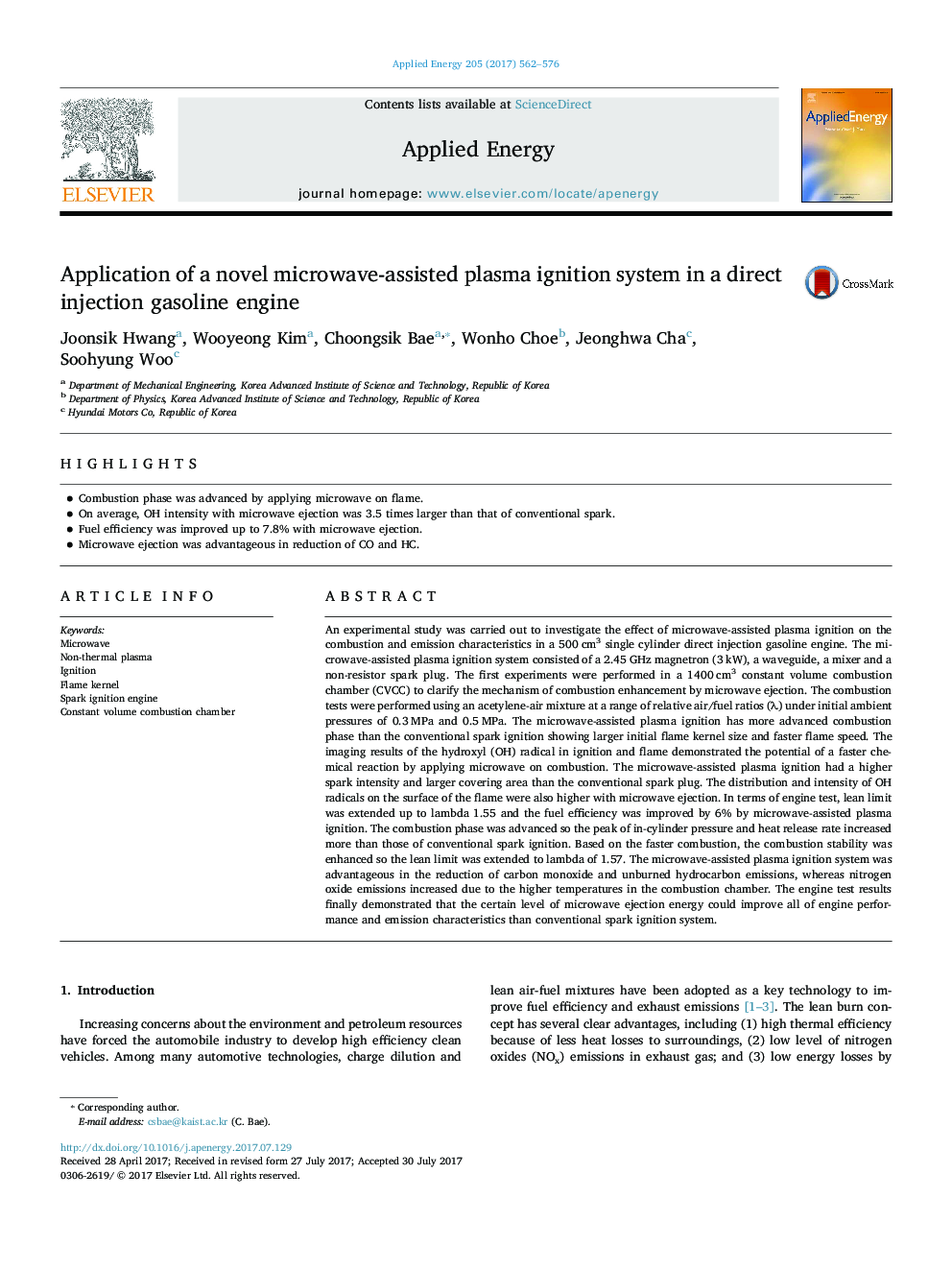| کد مقاله | کد نشریه | سال انتشار | مقاله انگلیسی | نسخه تمام متن |
|---|---|---|---|---|
| 4915868 | 1428085 | 2017 | 15 صفحه PDF | دانلود رایگان |
عنوان انگلیسی مقاله ISI
Application of a novel microwave-assisted plasma ignition system in a direct injection gasoline engine
ترجمه فارسی عنوان
استفاده از سیستم جدید احتراق پلاسما با مایکروویو در یک موتور بنزینی تزریق مستقیم
دانلود مقاله + سفارش ترجمه
دانلود مقاله ISI انگلیسی
رایگان برای ایرانیان
کلمات کلیدی
مایکروویو، پلاسما غیر حرارتی، آتش گرفتن، هسته شعله، موتور احتراق جرقه محفظه احتراق حجم ثابت،
موضوعات مرتبط
مهندسی و علوم پایه
مهندسی انرژی
مهندسی انرژی و فناوری های برق
چکیده انگلیسی
An experimental study was carried out to investigate the effect of microwave-assisted plasma ignition on the combustion and emission characteristics in a 500 cm3 single cylinder direct injection gasoline engine. The microwave-assisted plasma ignition system consisted of a 2.45 GHz magnetron (3 kW), a waveguide, a mixer and a non-resistor spark plug. The first experiments were performed in a 1400 cm3 constant volume combustion chamber (CVCC) to clarify the mechanism of combustion enhancement by microwave ejection. The combustion tests were performed using an acetylene-air mixture at a range of relative air/fuel ratios (λ) under initial ambient pressures of 0.3 MPa and 0.5 MPa. The microwave-assisted plasma ignition has more advanced combustion phase than the conventional spark ignition showing larger initial flame kernel size and faster flame speed. The imaging results of the hydroxyl (OH) radical in ignition and flame demonstrated the potential of a faster chemical reaction by applying microwave on combustion. The microwave-assisted plasma ignition had a higher spark intensity and larger covering area than the conventional spark plug. The distribution and intensity of OH radicals on the surface of the flame were also higher with microwave ejection. In terms of engine test, lean limit was extended up to lambda 1.55 and the fuel efficiency was improved by 6% by microwave-assisted plasma ignition. The combustion phase was advanced so the peak of in-cylinder pressure and heat release rate increased more than those of conventional spark ignition. Based on the faster combustion, the combustion stability was enhanced so the lean limit was extended to lambda of 1.57. The microwave-assisted plasma ignition system was advantageous in the reduction of carbon monoxide and unburned hydrocarbon emissions, whereas nitrogen oxide emissions increased due to the higher temperatures in the combustion chamber. The engine test results finally demonstrated that the certain level of microwave ejection energy could improve all of engine performance and emission characteristics than conventional spark ignition system.
ناشر
Database: Elsevier - ScienceDirect (ساینس دایرکت)
Journal: Applied Energy - Volume 205, 1 November 2017, Pages 562-576
Journal: Applied Energy - Volume 205, 1 November 2017, Pages 562-576
نویسندگان
Joonsik Hwang, Wooyeong Kim, Choongsik Bae, Wonho Choe, Jeonghwa Cha, Soohyung Woo,
